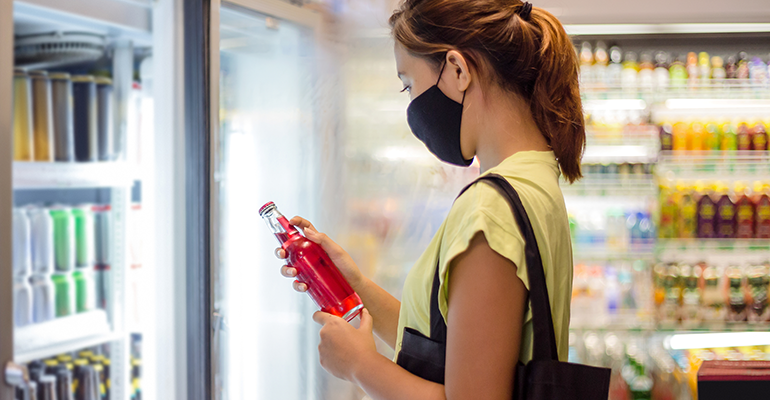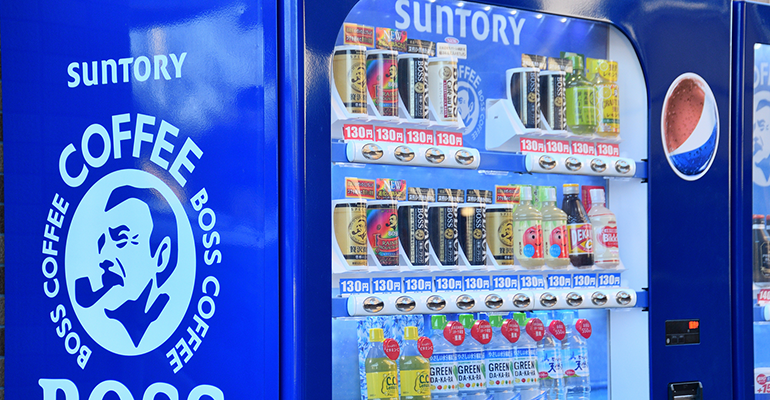Welcome to SJGLE.com! |Register for free|log in

Related Searches: Tea Vitamin Nutrients Ingredients paper cup packing
Welcome to SJGLE.com! |Register for free|log in

Related Searches: Tea Vitamin Nutrients Ingredients paper cup packing
Retail sales of soft drinks in Asia Pacific are set to reach $182bn this year but the economic outlook remains particularly challenging, and the soft drinks category could be hit hard.

© iStock/Kanawa_Studio
The lingering war in Ukraine has pumped up inflation and increased uncertainty, noted Euromonitor International insights manager Nathanael Lim in a recent blog. Regional real GDP growth is expected to slow significantly from 6.7% in 2021 to 4.2% in 2022 and 4.7% in 2023, according to its Q4 2022 baseline forecasts.
“[…] soft drinks is expected to take a big hit, as consumers in Asia Pacific reduce their consumption and seek cheaper alternatives,” Lim wrote.
Indeed, value for money is a key feature in purchases, especially in emerging markets like Vietnam and the Philippines, so drinks manufacturers are having to adapt and innovate.
Some are employing what Lim calls “creative approaches”, such as a flexible price/packaging mix in order to manage rising costs.
Some have moved to smaller packaging formats, he tells Ingredients Network. In Japan, Oi Ocha Bold Green Tea launched a smaller pack size, 350ml PET bottles, in order to “maximise margin to drive growth”. This serves to cope with rising cost of raw materials in the short-term, but in the long-term companies are focusing on sustainability and pushing for the use of recycled plastics in their packaging, he adds.
Others are doing all they can to maintain prices and keep costs down for consumers as they struggle with the cost-of-living crisis. Lim offers the example of the energy drinks companies TCP Group and Carabao in Thailand which launched a campaign earlier this year to maintain prices for as long as possible. Still, this was done in tandem with product diversification, launching new products with health benefits, such as Kanzou X2, which is priced at a premium, targeting health-conscious consumers, Lim notes.
Some manufacturers have been left with no choice but to increase prices – in some cases for the first time in decades.
In Japan, Suntory started increasing prices in October 2022 across various channels, including vending machines. Other companies, such as Kirin and Coca-Cola, followed suit due to continued increases in materials costs such as PET plastic resin (for making bottles). Brands often make such announcements early in order to prepare consumers, Lim says.
He adds: “In other emerging markets, including Thailand, companies have adopted varying price strategies. Energy drinks player Osotspa has increased the price of its M-150 drink in the 150ml pack size from THB10 to THB12, its first price adjustment in 37 years.”
Given such drinks are considered essential by low-income consumers for boosting energy the “huge” price spikes in some of these products will hit them hardest. Developed markets, like South Korea and Japan, reported minimal price increases due to the lower level of inflation. Manufacturers were also better able to absorb rises in costs across transport, packaging and raw materials.
Lim suggests manufacturers will need to continue to adopt new strategies to weather the price storm and prevent consumers down-trading; more innovation is likely on the way and health could be a critical factor.
 © AdobeStock/tamayura39
© AdobeStock/tamayura39
In Asia Pacific, low-carb/low sugar products remain key to driving growth, he says, but there have also been more beverages infused with vitamins and local herbal ingredients like ginger to boost immunity.
“Beverage manufacturers are coming up with new functional ingredients focused on consumer health,” he explains. “Besides immunity, wher vitamins and ginger are infused in beverages such as RTD [ready-to-drink] tea, there have been other ingredients such as chamomile and cannabis introduced, to aid in relaxation and mood management. Examples include Jayo ginger RTD tea in Indonesia and Sappe Beauti Drink Green Relaxing RTD tea in Thailand.”
Additions that help support immunity are likely to prove popular, according to analysts at GlobalData. The “healthier” and functional drinks will continue to do well in the region, and the demand for plant and herbal-based raw materials and beverages has increased significantly, noted consumer market intelligence director Suzanna Clarke.
GlobalData forecasts that water and hot beverages will “perform best” over the next five years, increasing by 51.2bn litres and 83.1bn litres respectively. Its experts point towards rising population, growing disposable incomes and health-and-wellness trends that will all fuel growth.
E-newsletter
Most Viewed
Latest News
Recommended Products